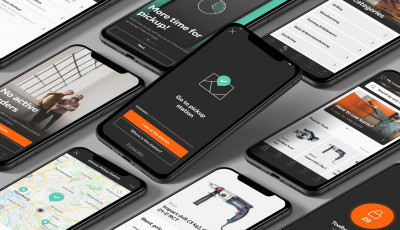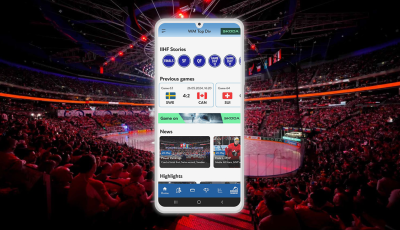Executive summary
The Norwegian-based company Autopay wants to reshape the parking industry by setting a new standard for a seamless, ticketless, and paperless parking experience. The company offers parking operators, land and facility owners, and tenants a flexible business platform for managing parking and other services. Over 3.5 million users use the system, and nearly 2 million transactions are handled on the platform weekly.
The Autopay platform uses Automated Number Plate Recognition technology to automatically identify cars using a parking zone, toll road, or EV charging station. If the customer has a payment card linked to their account, the system automatically deducts the fee from the card. Alternatively, users can pay using the on-site payment machine, online, or even receive the invoice by mail.
The one-stop solution covers the entire customer journey, from identification to payment, for both registered and unregistered users. In addition, the platform handles administrative functionalities, such as invoicing, customer account and permit management, and more. Thanks to a powerful API, clients can effortlessly manage large vehicle fleets and complex services and build custom solutions on the platform.
Since the beginning, the system has been designed to focus on efficiency, cost optimization, and easy scalability. It has also been built in alignment with sustainable development principles, which include minimizing the amount of data collected and stored and opting for cloud-based solutions.
Our collaboration started more than 10 years ago when the team tasked Helmes with delivering the first proof-of-concept of the service. As Autopay has grown, we have remained a trusted development partner for them, working as an augmented team with the company’s in-house product teams.
Meet the customer
Founded in 2013, Autopay is a leading provider of parking management solutions based on Automatic Number Plate Recognition (ANPR) technology. The company’s fully digital parking management system offers a hassle-free end-user experience. It provides parking operators and landowners with a powerful one-stop solution for different use cases.
The Norwegian-based company operates in eight countries and is expanding rapidly. Currently, Autopay services are used by over 3.5 million users, and nearly 2 million transactions are being handled on the platform weekly.
The challenge
Before we collaborated with Autopay on their new-generation parking solution, paid parking services had predominantly relied on two models:
- gated parking areas where the customer needed to pay the fee before exiting the area, and
- parking zones with parking meters where parking inspectors checked the cars and issued tickets for parking violations.
The Autopay team envisioned a seamless parking solution without barriers or parking inspectors. Instead, the system would rely on the nascent image recognition technology, which allowed computers to identify license plate numbers. With their envisioned solution, the customer could drive in and out of the parking zone without performing any additional actions. At the same time, the system would automatically identify the car, calculate the fee, and charge the customer’s payment card.
The collaboration
The team tasked Helmes with delivering the service’s first proof-of-concept, marking the start of a collaboration that now spans a second decade. The initial proof-of-concept has evolved into a pioneering free-flow parking system.
In the initial phase, we ideated and delivered a proof-of-concept of the technical solution, which was validated on a limited scale with one parking operator. Once the technological feasibility of the solution had been established, extended pilots provided the team with proof that the service had a strong demand and was easily scalable, leading to the launch of the Autopay brand and the start of the company’s fast growth. The product-market fit has been found in the current scale-up phase, and the focus is now mainly on horizontal and vertical expansion.
As Autopay has grown over the years, we have remained the company’s trusted software development partner. Today, Helmes provides one product team for the company, which works as an augmented software team with its in-house product teams.
Our team is unique because it lacks certain roles found in typical development teams, such as analysts and testers. Instead, our team is comprised of developers, a product manager, and a user experience designer. Every team member directly interacts with the client and works with high-level business requirements, with the team forming a natural extension of the organization.
The solution
How does it work?
The Autopay platform utilizes proprietary ANPR software. Multiple cameras capture license plates as cars pass a certain point, such as the entrance or exit of a parking area. The information is processed on-site and forwarded to the server, where any accounts, payment methods, and parking permits linked to the number are identified. The information is sent back to the site and displayed to the user in less than a second.
The platform covers the customer journey from identification to payment for both registered and unregistered users. Once the initial on-site setup with cameras and payment machines has been installed, subsequent configuration can be performed online.
In addition to the core functionality of license plate identification, the platform handles administrative functionalities, such as invoicing, customer account and permit management, and more. It allows clients to effortlessly manage large vehicle fleets and complex services (for instance, parking permits for airport rental car operators) and easily integrates with their internal systems.
The platform supports a variety of payment methods. If the user has a payment card linked to their account, the system automatically deducts the fee from the card. Alternatively, users can pay in the on-site payment machine or online. Finally, sending a payment invoice to the car owner is possible. The system also effortlessly charges users from other countries.
The platform caters to four main groups of clients: parking operators, land and facility owners, tenants of business facilities, and end users, for whom the self-service platform offers different user modes with different functionalities. For instance, parking operators can administer parking zones, services, and permits, while tenants can manage parking rights for their employees.
The dashboard gives operators and owners a real-time business overview, including parking and payment statistics. They can conveniently monitor, analyze, and manage their services in one place without juggling between different services.
Technologies
Since the beginning, the tech stack choices have focused on efficiency, cost optimization, and easy scalability. The cloud-native platform uses Kotlin for the backend and React for the front end.
The platform incorporates a central payment solution that supports different payment cards and on-site payment machines equipped with card payment terminals. It is integrated with various systems, allowing for seamless data exchange (for instance, information on vehicle owners)
The integrations are based on an API for easy maintenance. Using a powerful API, clients can quickly build innovative custom solutions on the platform to derive more value from the system.
Throughout the development process, great attention has been paid to the system’s efficiency. While not a goal in itself, the project is a prime example of sustainable software development, which includes minimizing the amount of data collated and stored and opting for cloud-native solutions.
Benefits of the system
The Autopay platform offers parking operators, facility owners, tenants, and end users many benefits:
- A quick and hassle-free user experience for end customers
- A one-stop-solution adapted to all use cases (registered and unregistered users, different payment methods, etc) that covers the whole user journey from identification to payment
- The ANPR technology, coupled with automated and manual checks, results in very high precision of license plate recognition
- Clients can conveniently monitor, analyze, and administer their business in a self-service platform
- A straightforward and largely automated installation
- A powerful API allows clients to build custom solutions on top of the platform
- A cloud-native system for easy scalability
- A high level of automation for efficiency and reliability
- The system has been built in alignment with sustainable software development principles
Get in touch
At Helmes, we offer clients comprehensive solutions encompassing custom software development, product management, design, and integration. If you are looking for a digitalization partner in the field of finance, logistics, smart cities, or other sectors, don’t hesitate to contact us.
Get in touch





